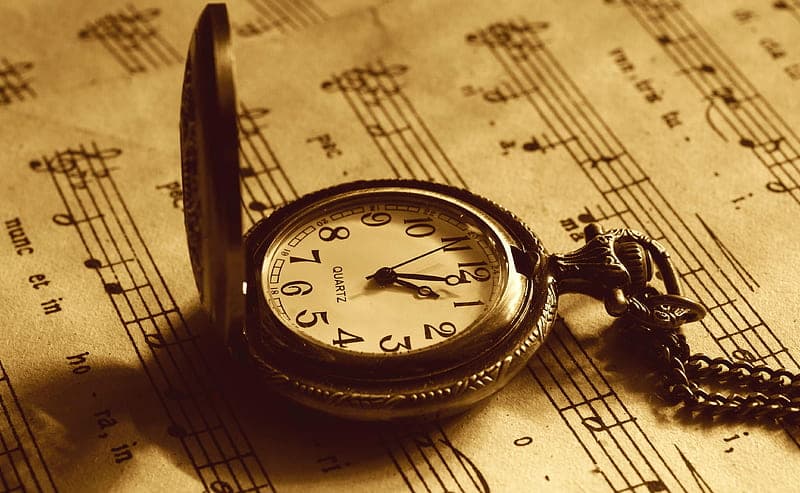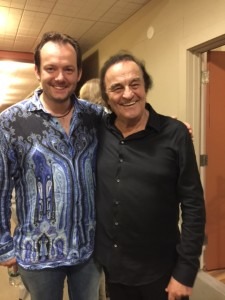
Andris and Dutoit at the backstage
Tanglewood is just two hours north of Boston but a world away. The musicians and staff move for the summer, many with their families, to either rented cabins, or summer homes. It takes more than a village to present hundreds of concerts virtually glitch-free during the festival. Extra hands on deck usher throngs of people onto the grounds, direct thousands of vehicles, feed hundreds of people, conduct multiple tours of the grounds, host luncheons with soloists, accommodate groups of people or individuals to hear open rehearsals and man the gift shops, ticket booths, and offices.
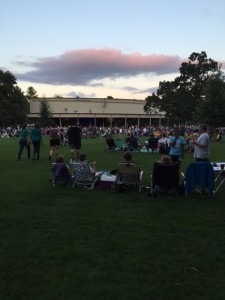
BSO shed crowd
We were excited about the variety of programs that were being offered. Our first program was in the relatively new Ozawa Hall—a stunning venue of wood in a horseshoe shape, which also opens at the back to allow people to listen while sitting on the lawn. This hall is used by the Tanglewood fellows—students who spend their summer studying with the BSO members and guest artists, and for performances of smaller ensemble works.
Stravinsky: L’Histoire du Soldat (The Soldier’s Tale)
The Soldier’s March
Reprise of “Airs by a Stream”
Tango
The Devil’s Dance
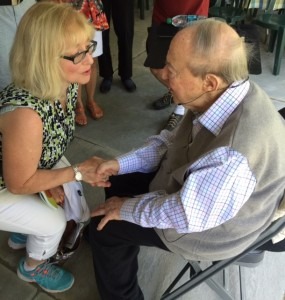
Janet Horvath and Pressler
The following day and evening was a rare privilege. Dutoit was conducting. The soloist was the legendary pianist of the Beaux Arts Trio Menahem Pressler, now 93 years old. Wandering on the grounds during the day is free so we did, knowing that we would be able to hear a bit of the rehearsal for that evening’s performance. As luck would have it, we stumbled upon the luncheon that was scheduled immediately following the rehearsal, a conversation between Pressler and Martin Bookspan.
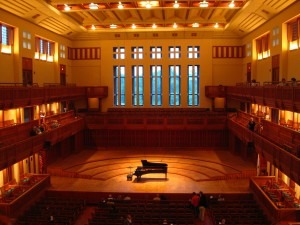
Ozawa Hall
In the ‘Indian summer’ of his musical life, after more than five decades performing with the trio, Pressler is now playing piano concertos. Born in Magdeburg Germany in 1923, Pressler was fortunate to obtain a visa to Palestine three weeks before Wolrd War II. In 1946 he was the first prizewinner of the Debussy International Competition in San Francisco. A major artist management firm signed him up and Pressler was soon introduced to the great conductor Eugene Ormandy. Pressler began performing all over the country.
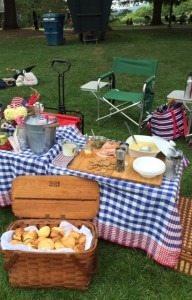
Picnic
“Art is not entertainment. It is creation, interpretation, meditation.”
“Inspiration does not always come from the same source. You receive as well as you give.” “The audience is the echo.”
We crowded around Pressler after lunch for a photo.
That evening he performed Mozart’s Piano Concerto No. 23 in A, K488. Although Pressler had to be supported on both sides to walk across the stage, his playing was awe-inspiring. The slow movement had a special depth, a delicate touch and an exquisite sense of timing that is only achieved after years of experience and devoted music making. It was magnificent.
Menahem Pressler, Mozart K 488, Paavo Järvi, O. de Paris.
Dutoit chose a rarely performed work to follow the Mozart—Gioachino Rossini’s Stabat Mater, a work for chorus, four solo vocalists and orchestra. Although Rossini is known for his comic operas, this piece, a series of ten movements, is fervent striking music based on the text of lamentations of the Biblical Mary. The ‘a cappella’ movements (choir unaccompanied) were especially transporting.
Rossini Stabat Mater – the entire production with Anna Netrebko Accademia Santa Cecilia
Saturday we were treated to Acts I and II of Verdi’s opera Aida conducted by Andris Nelsons, with the superb soprano Kristine Opolais, (who happens to be his wife), in the title role. This mesmerizing performance of the tragic love story left nothing to the imagination despite it being a concert version of the opera.
AIDA – Opolais, Urmana – Nelsons
And less than twenty-four hours later, on Sunday afternoon, Nelsons conducted a dazzling program of Berlioz Overture to Beatrice et Bénédict, a newer work, Tsontakis Sonnets: Tone Poems for English Horn and Orchestra, Saint-Saëns Piano concerto No. 5 in F the “Egyptian” performed by Dajan Lazić, and one of my favorite pieces of all time, the poignant, dramatic Romeo and Juliet by Prokofiev. I was moved to tears by the end.
Prokofiev: Romeo and Juliet, Op. 64
Act I: The Duke’s Command
Act I: Dance of the Knights
Act II: Finale
Act IV: Juliet’s Death
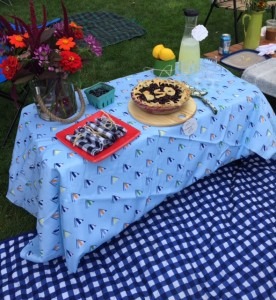
BSO pie
Tanglewood picnic extravaganzas, which occur on the grounds, are without a doubt on a par with the creations onstage. The audience wheels in their repasts, on wagons, carts and rolling chests.
Although audience members may purchase food on the grounds—anything from hamburgers, to prepared picnics, and fine dining options—many long-time Tanglewood attendees have established the tradition of bringing their specialties—cuisine that defies description—complete with wine, tablecloths, candelabra, flower arrangements, ice buckets, fancy desserts and silverware. I saw a striking several-tiered trifle, innovative salads and a homemade pie with the letters ‘BSO’ fashioned with pieces of dough. People eat, drink, are merry and they listen attentively.
There are few places you can enjoy outstanding music in such gorgeous surroundings. Our Tanglewood experience was exceptional.



